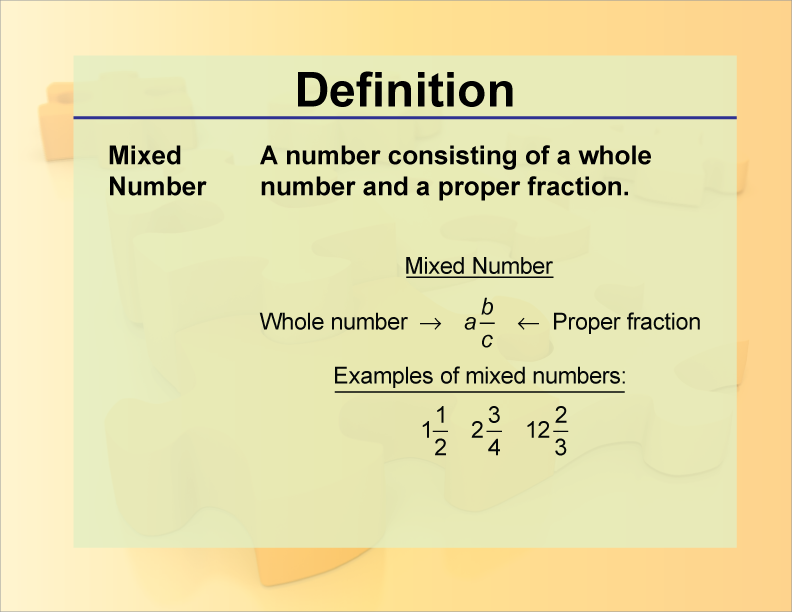
Display Title
Definition--Fraction Concepts--Mixed Number
Display Title
Mixed Numbers

Topic
Fractions
Definition
A mixed number is a combination of a whole number and a proper fraction, representing a value between two whole numbers.
Description
A mixed number, also known as a mixed fraction, is a mathematical expression that combines a whole number and a proper fraction. For example, the mixed number 2 1/4 consists of the whole number 2 and the fraction 1/4.
| 214 | 2+14 |
This representation is particularly useful in various real-life applications, such as cooking or construction, where measurements often fall between whole numbers. Mixed numbers are significant in the study of fractions because they provide an intuitive way to understand quantities that are not whole. They help in visualizing and estimating values more easily than improper fractions. For instance, while the improper fraction 9/4 might be less intuitive, converting it to the mixed number 2 1/4 makes it clearer that the value is slightly more than 2.
In arithmetic operations, mixed numbers can be converted to improper fractions to simplify calculations such as addition, subtraction, multiplication, and division. This conversion process involves multiplying the whole number by the denominator of the fraction and adding the numerator, which then forms the new numerator over the original denominator. Understanding mixed numbers is crucial for students as it lays the foundation for more advanced mathematical concepts and real-world problem-solving skills. They are a stepping stone to mastering fractions and their applications in various fields.
For a complete collection of terms related to fractions click on this link: Fractions Collection.
| Common Core Standards | CCSS.MATH.CONTENT.4.NF.B.3.C |
|---|---|
| Grade Range | 3 - 6 |
| Curriculum Nodes |
Arithmetic • Fractions • Fractions and Mixed Numbers |
| Copyright Year | 2013 |
| Keywords | fraction, mixed numbers, numerator, denominator |